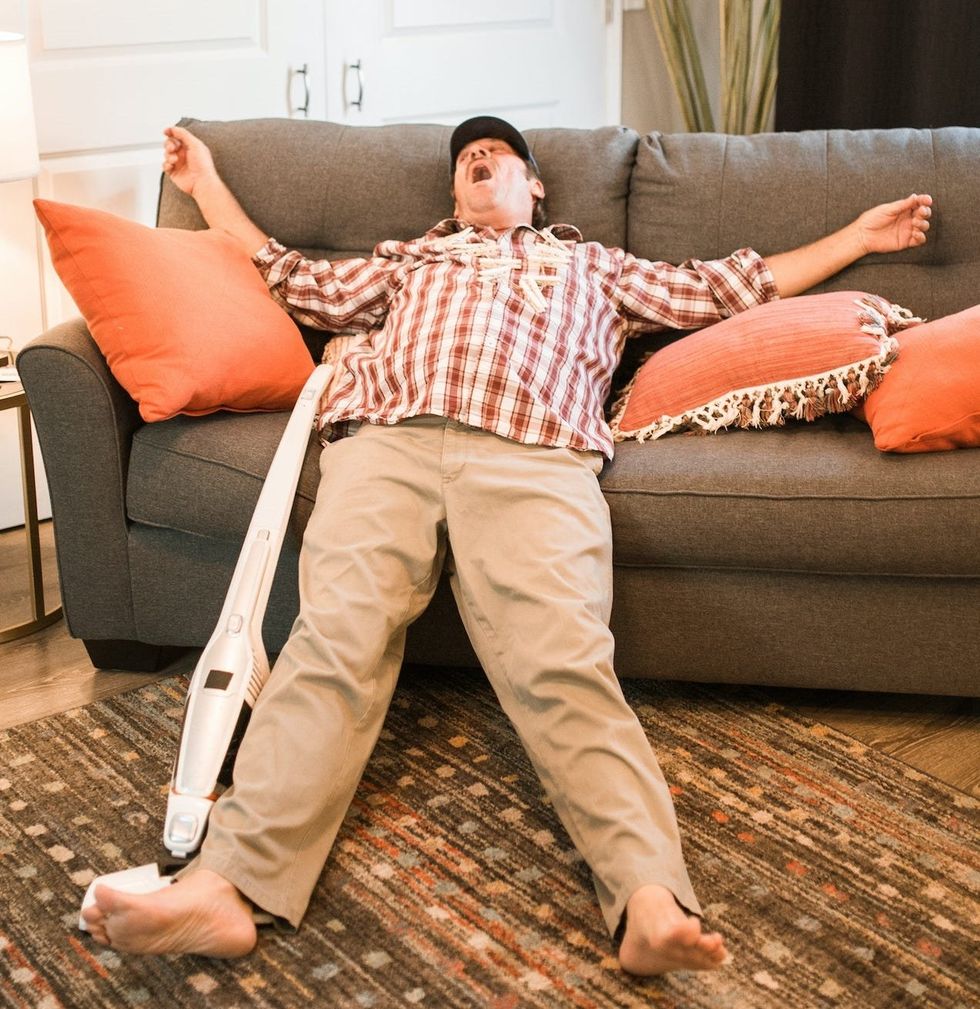Cigarette smoking is the leading cause of disease and early death in the United States. Even though cigarette smoking has slowly declined in the United States, many alternatives have gained popularity.
Examples of alternative tobacco and nicotine delivery products include:
- E-cigarettes or "vaping"
- Smokeless tobacco
- Waterpipes
These come in various forms, sizes, and flavors.
Alternative tobacco products contain harmful chemicals and toxins that have health risks. The chemicals and toxins may cause serious health problems, including cancer. In 2019, an outbreak is occurring in the United States of a very serious lung disease associated with the use of vaping devices. The specific cause of this outbreak has yet to be determined; it is unclear whether the outbreak is caused by e-fluids that contain nicotine or THC and whether the harmful products were purchased "off the street" or in retail outlets. Until more is known, all individuals of any age are strongly advised to refrain from the use of any vaping devices.
If you smoke or use these products, talk with your doctor. Ask about ways to quit.
E-cigarettes or "vaping"
Electronic cigarettes are also known as e-cigarettes, e-cigs, vape pens, or vapor cigarettes. These devices may look like traditional cigarettes, pens, or USB flash drives. They can be battery operated or rechargeable.
E-cigarettes do not burn tobacco. Instead, they have cartridges filled with a liquid that may contain flavorants, nicotine, tetrahydrocannabinol (THC), or cannabinoid (CBD) oils and other chemicals. The e-cigarette heats the liquid chemicals into a vapor or steam that a person inhales, which is why using these is often called "vaping."
While the types and concentrations of toxins vary by brand and device, all e-cigarettes contain harmful substances. They have only been readily available in the United States since 2006. As a result, there is limited research on their long-term health risks. Because of the risks, the U.S. Food and Drug Administration (FDA) took initial steps towards regulating these products in 2016, though there is still limited regulation of the contents of the e-liquids and the devices.
As of September 2019, there have been more than 800 cases of a severe lung disease, including 12 deaths, in the United States. All the affected patients reported previous use of vaping devices, but there is no confirmed link with a specific vaping device or e-liquid. The U.S. Centers for Disease Control (CDC) reports so far indicate that most patients with this lung disease reported using products containing THC, but many also reported using nicotine. Some patients reported just using nicotine-containing e-cigarettes.
Since no single product or substance has yet been linked to the disease, the CDC and the FDA are recommending that people stop using these products. If you continue to use e-cigarettes, the CDC recommends that you do not modify cartridges or purchase them off the street and that you monitor your health.
If you develop any symptoms of this lung disease, including coughing, shortness of breath, chest pain, fatigue, and abdominal pain, talk with your doctor immediately. To learn more about this lung disease and its symptoms, visit (Please note that this link takes you to a U.S. government website.)
Many people may turn to e-cigarettes as a way to try to stop smoking, and there is evidence that they can be effective for smoking cessation. Even so, e-cigarettes would never be considered the first choice for smoking cessation because of the risks and given the extent of the current outbreak of severe lung disease, e-cigarettes should be avoided at the present time.
The FDA has not approved e-cigarettes as a way to quit smoking. Doctors and the FDA recommend evidence-based methods for quitting smoking. If you have used e-cigarettes to stop smoking, do not return to smoking cigarettes instead of using e-cigarettes. Instead, turn to safe ways to deliver nicotine such as nicotine patches, gum, lozenges, and nasal spray. Learn more about
Smokeless tobacco
Smokeless tobacco products contain tobacco or tobacco blends. They have many names. And they fall into several categories.
Chewing tobacco. This is tobacco in the following forms:
- Loose leaves
- Leaves pressed together, commonly called a plug
- Leaves twisted together to resemble a rope, commonly called a twist
Chewing tobacco sits between the cheek and gum. Usually, the person spits out the tobacco juices. But long-time users may swallow some of the juices.
Snuff. This is finely ground tobacco. It comes in dry or moist forms. It is sometimes packaged in ready-to-use pouches.
People usually sniff or swallow dry snuff. In contrast, people place moist snuff between the gum and lip or cheek. Then, it slowly absorbs.
Snus. This is a tobacco product that originated in Sweden. Typically, manufacturers package the moist tobacco powder in a pouch. People place it inside the cheek for absorption. They do not swallow the pouch. It must be thrown away after use.
Tobacco companies often market snus to people who smoke cigarettes because it is allowed in smoke-free areas. But public health advocates worry that snus does not help efforts to reduce tobacco use.
Dissolvable tobacco. This is compressed powdered tobacco. It resembles a small, hard candy that dissolves in the mouth.
Dangers of smokeless tobacco products
Prolonged use of smokeless tobacco products contributes to serious health issues. These include cancer and heart disease.
Some smokeless tobacco products contain 3 to 4 times more nicotine than cigarettes. And these products contain substances that increase risk of
Chewing tobacco may cause white patches, called leukoplakia. They appear on the gums, tongue, or lining of the mouth. Most of these are noncancerous, but some show early signs of cancer. Oral cancer often occurs near patches of leukoplakia.
Smokeless tobacco products also cause dental problems and contribute to gum disease and tooth decay.
Many people claim that these products are less harmful than smoking and can help people stop smoking. But these alternatives are not evidence-based methods. The FDA has not approved smokeless tobacco products for quitting smoking.
Waterpipes
Another popular alternative tobacco product is the waterpipe. Some people call them hookahs, among other names. Worldwide, people have smoked them for centuries. Particularly in the Middle East, Asia, and Africa.
Modern-day waterpipes are composed of 4 main parts:
- A small bowl on top of the waterpipe. This holds a mixture of shredded tobacco and sweetener
- A broad base to hold water
- A pipe connecting the bowl to the base
- A rubber hose attached to a mouthpiece. People pull the smoke from the mouthpiece.
Vendors sell small packets of the tobacco mixture in various flavors.
Sometimes, people smoke waterpipes alone. But they are often used in social settings. And multiple people commonly share the same mouthpiece.
In the United States, waterpipes are especially popular among college students and young people. Unfounded assumptions about their relative safety fuel the trend. People think that water filters tobacco smoke, making it less harmful. But there is no proof of this.
Potential health risks
Waterpipes carry these potential health risks:
Exposure to the same toxins as cigarettes but in higher quantities. Waterpipe smoke contains high levels of many toxic compounds found in cigarettes. These include carbon monoxide, heavy metals, and chemicals linked to cancer.
Cancers associated with the toxins and chemicals are:
- Lung cancer
- Stomach cancer
- Bladder cancer
- Esophageal cancer
Other conditions associated with the toxins and chemicals include:
- Heart disease
- Respiratory diseases like emphysema, which causes difficulty breathing
Typically, waterpipe smoking sessions last up to 1 hour. This exposes people to higher toxin levels than cigarettes.
Potential to spread infectious disease. Sharing a waterpipe with other people increases the risk of transferring diseases and viruses. Especially if people do not clean the mouthpieces properly.





 Going to the cinema alone is good for your mental health, says science
Going to the cinema alone is good for your mental health, says science












 women in street dancing
Photo by
women in street dancing
Photo by  man and woman standing in front of louver door
Photo by
man and woman standing in front of louver door
Photo by  man in black t-shirt holding coca cola bottle
Photo by
man in black t-shirt holding coca cola bottle
Photo by  red and white coca cola signage
Photo by
red and white coca cola signage
Photo by  man holding luggage photo
Photo by
man holding luggage photo
Photo by  topless boy in blue denim jeans riding red bicycle during daytime
Photo by
topless boy in blue denim jeans riding red bicycle during daytime
Photo by  trust spelled with wooden letter blocks on a table
Photo by
trust spelled with wooden letter blocks on a table
Photo by  Everyone is Welcome signage
Photo by
Everyone is Welcome signage
Photo by  man with cap and background with red and pink wall l
Photo by
man with cap and background with red and pink wall l
Photo by  difficult roads lead to beautiful destinations desk decor
Photo by
difficult roads lead to beautiful destinations desk decor
Photo by  photography of woman pointing her finger near an man
Photo by
photography of woman pointing her finger near an man
Photo by  closeup photography of woman smiling
Photo by
closeup photography of woman smiling
Photo by  a man doing a trick on a skateboard
Photo by
a man doing a trick on a skateboard
Photo by  two men
two men  running man on bridge
Photo by
running man on bridge
Photo by  orange white and black bag
Photo by
orange white and black bag
Photo by  girl sitting on gray rocks
Photo by
girl sitting on gray rocks
Photo by  assorted-color painted wall with painting materials
Photo by
assorted-color painted wall with painting materials
Photo by  three women sitting on brown wooden bench
Photo by
three women sitting on brown wooden bench
Photo by 
 Photo by
Photo by  Photo by
Photo by  Photo by
Photo by  Photo by
Photo by 


 people sitting on chair in front of computer
people sitting on chair in front of computer






